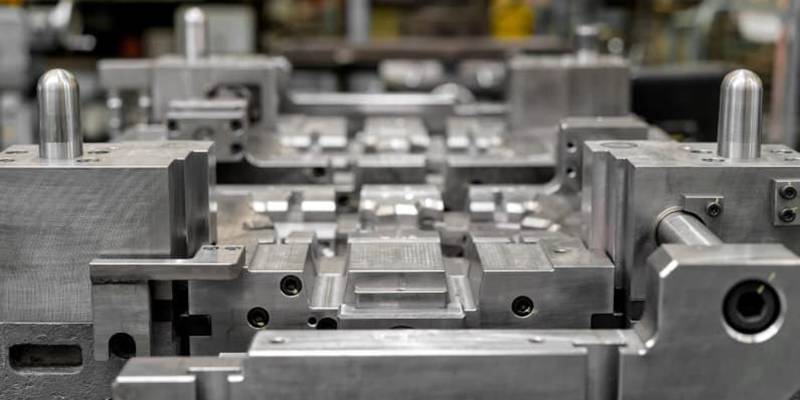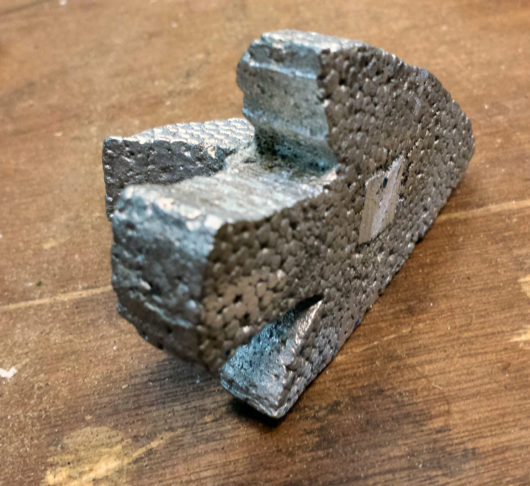Frequently asked questions about Aluminum Casting
Fads and technologies Changing the Landscape of Aluminum Foundry Workflow
The aluminum foundry sector is undertaking considerable modifications because of technical innovations. Automation, expert system, and sustainable techniques go to the leading edge of this change. These developments assure to boost productivity, optimize manufacturing processes, and minimize environmental influence. As these fads remain to develop, they increase crucial inquiries regarding the future of aluminum production and its role in various sectors. What ramifications might these changes hold for the marketplace and its stakeholders?
Advanced Automation in Aluminum Foundries
As the need for premium and effective aluminum products remains to climb, many foundries are progressively embracing innovative automation modern technologies. aluminum casting company. These innovations improve different procedures, improving productivity and lowering labor prices. Robot systems, for circumstances, are utilized for tasks such as mold handling, pouring, and ending up, ensuring uniformity and precision
Automated quality assurance systems are likewise coming to be usual, employing cameras and sensing units to detect issues in real-time, consequently reducing waste and revamp. In addition, the assimilation of programmable reasoning controllers (PLCs) permits far better tracking and control of assembly line, assisting in quicker modifications in reaction to transforming demands.
Additionally, making use of automated assisted automobiles (AGVs) optimizes material transportation within the foundry, additional boosting functional effectiveness. With these improvements, aluminum foundries are not only meeting market demands but additionally placing themselves as leaders in lasting manufacturing practices.
The Function of Artificial Intelligence in Manufacturing Optimization
Advanced automation technologies have actually set the stage for the combination of expert system (AI) in aluminum foundries, substantially enhancing production optimization. AI systems assess substantial quantities of data generated throughout the production procedure, offering insights that bring about improved efficiency and decreased waste. These systems can identify patterns and trends that human drivers might overlook, enabling anticipating upkeep and aggressive decision-making.
AI formulas enhance casting procedures by changing criteria in real-time, guaranteeing the highest possible quality output while reducing problems. The implementation of artificial intelligence in quality control procedures additionally improves accuracy, as AI can promptly assess product requirements against established standards.
Eventually, the fostering of AI in aluminum foundries not just improves procedures however also equips workforce capabilities, permitting a more responsive and agile manufacturing environment. By taking advantage of these innovative technologies, foundries can achieve considerable gains in efficiency and operational excellence.
Lasting Practices and Their Influence On Environmental Impact
Just how can aluminum foundries efficiently decrease their ecological footprint while preserving productivity? One crucial strategy is the adoption of sustainable methods, which consist of reusing scrap aluminum to decrease waste and preserve power. By making use of closed-loop systems, foundries can substantially decrease their reliance on virgin materials, thereby minimizing carbon emissions connected with extraction and processing.
Implementing energy-efficient technologies, such as advanced melting heating systems and heat recovery systems, can considerably reduce energy intake. Changing to eco-friendly power sources additionally improves sustainability, allowing foundries to run with a minimized environmental effect.

Smart Manufacturing Technologies Enhancing Effectiveness

Robot systems improve recurring tasks, guaranteeing constant high quality while releasing human employees to concentrate on more complicated duties. Additionally, IoT connectivity facilitates seamless interaction visit this page throughout the assembly line, boosting coordination and responsiveness to market needs. Consequently, aluminum foundries can achieve greater throughput and improved quality assurance, positioning themselves competitively in a quickly advancing sector landscape. The adoption of these smart technologies symbolizes a transformative change in the direction of performance and advancement in foundry procedures.
The Future of Lightweight Aluminum Products in Various Industries
As industries progressively focus on sustainability and effectiveness, the need for lightweight aluminum products is predicted to grow substantially. This change is particularly noticeable in sectors such as auto, aerospace, and building and construction, where lowering weight straight adds to boosted fuel effectiveness and lower discharges. Makers are introducing in aluminum alloys and construction methods to produce parts that are not only lighter but also more powerful and much more long lasting.
The auto sector, for instance, is welcoming aluminum to meet stringent gas economic situation criteria while preserving safety and efficiency. Likewise, aerospace firms are leveraging light-weight aluminum to enhance aircraft performance. In construction, aluminum's versatility enables cutting-edge layouts that decrease product usage without compromising architectural stability.
As innovation advances, consisting of the assimilation of smart production and reusing processes, the future of lightweight aluminum products shows up bright, appealing to sustain a much more lasting and reliable industrial landscape.

Frequently Asked Concerns
What Are the Key Challenges Facing Aluminum Foundries Today?
Aluminum foundries today encounter challenges such as rising power expenses, environmental guidelines, labor shortages, competition from innovative production innovations, and the demand for boosted useful site sustainability methods to satisfy market needs and client assumptions successfully.
How Does Aluminum Recycling Impact Foundry Procedures?
Aluminum recycling greatly impacts foundry procedures by reducing raw material prices, advertising sustainability, and boosting production effectiveness. It allows foundries to reduce waste while fulfilling boosting need for green practices in the aluminum sector.
What Certifications Are Very Important for Aluminum Foundries?
ISO 9001 for quality administration, ISO 14001 for environmental management, and AS9100 for aerospace requirements are vital certifications for aluminum foundries. These accreditations enhance operational efficiency, guarantee item quality, and advertise lasting practices within the industry.
How Do Labor Costs Influence Aluminum Foundry Productivity?
Labor expenses noticeably influence aluminum foundry earnings, as greater incomes can minimize margins while reliable labor administration can enhance performance. Balancing these factors is important for keeping competition and financial health and wellness in the sector.
What Prevail Flaws in Aluminum Castings and Their Causes?
Typical flaws in aluminum castings consist of porosity, contraction, and surface area imperfections. These problems often emerge from improper melting temperature levels, insufficient mold design, and contamination during the spreading process, eventually affecting the high quality and efficiency of the end product.
Advanced automation technologies have established the phase for the integration of artificial knowledge (AI) in aluminum foundries, considerably boosting manufacturing optimization. aluminum foundry. Exactly how can aluminum foundries effectively minimize their ecological impact while keeping efficiency? While aluminum foundries deal with boosting demands for efficiency and performance, the assimilation of clever production innovations uses a compelling service. Aluminum recycling considerably influences foundry operations by decreasing raw material prices, advertising sustainability, and improving production efficiency. Labor costs significantly impact aluminum foundry earnings, as higher salaries can reduce margins while efficient labor administration can enhance productivity